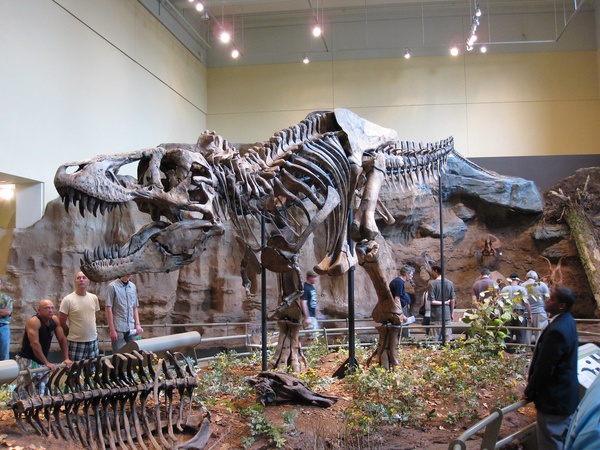Author: Dara Czernikowski
When walking through the galleries of a museum, how often do you read the labels on each display? Do you dissect each one with careful detail? Skim them for important information? Or perhaps skip them entirely, paying more attention to the visual display right in front of you? As a student interested in pursuing a career in public health, my interest is often directed toward the public. I was able to integrate that interest with my internship at the Carnegie Museum of Natural History by taking a closer look at the display labels in each gallery, specifically addressing the language used to describe species interactions.
Under the supervision of Dr. Jessica Landau, my investigation led me through many galleries, however the one I found most interesting from the results it yielded was Dinosaurs in Their Time. As one of the largest galleries featured in this museum, with extensive collections of fossils and prehistoric skeletons, there were plenty of display labels available for me to break down and record for my data collection. For statisticians, scientists and researchers out there, a large sample size is key, right?
I recorded the explicit occurrence of each word in a comprehensive Excel spreadsheet, allowing me to quantify the usage of positive (symbiotic or cooperative) or negative (competitive or predatory) species interaction vocabulary being used in the gallery. When I recognized the explicit occurrence of a word being used in a display label, I recorded it in my spreadsheet. In addition, I took careful notes about what kind of interaction was being displayed by the fossils themselves. I performed this same data collection routine with all the display labels in the gallery.
The quantitative results I found from the initial investigation were dramatic. Out of the 61 display labels available, there were 50 occurrences of negative species interactions and 2 occurrences of positive species interactions. This frequency of predatory and competitive language identified in this gallery unveiled a unique trend that motivated the rest of the project I worked on for the three months of my involvement in this internship.
Conducting this research was exciting and continued to pique my curiosity as trends revealed themselves through each gallery breakdown. Additionally, investigating the labels in this way allowed me to think critically about the interactions the public is having with the language used in the display labels and how they affect their experience as a viewer or museumgoer. I look forward to seeing this research develop further, and possibly shape how this museum and many more approach writing display labels in the future.
Dara Czernikowski, Museum Studies Intern at Carnegie Museum of Natural History - Fall 2020

